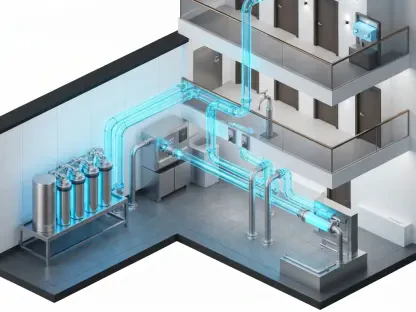In the fast-paced environment of the restaurant industry, the adoption of cutting-edge POS systems has become indispensable. These systems have evolved beyond their core function of processing payments into powerful tools that manage orders, inventory, and customer relations, thereby increasing overall operational efficiency. This guide provides insights and best practices for selecting an optimal POS system, exploring key features and criteria that can significantly enhance a restaurant’s productivity and profitability.
Introduction to Restaurant POS Systems
POS systems are the backbone of modern restaurant operations, facilitating not only payment processing but also serving as central hubs for managing orders and tracking essential business data. This guide is crafted to aid restaurant owners and managers in selecting the most suitable POS system, focusing on features like user interfaces, inventory management, and CRM capabilities. By fine-tuning these features, restaurants can streamline operations, improve customer satisfaction, and gain a competitive edge.
Importance of Best Practices in Selecting POS Systems
Implementing best practices when choosing POS systems is crucial for achieving substantial benefits such as heightened operational efficiency, cost-effectiveness, and robust security measures. Best practices ensure that restaurants select systems that fit seamlessly into existing operations, address specific needs, and prepare the business for future challenges. The adoption of a well-suited POS system can lead to improved accuracy in order processing, reduced labor costs, and enhanced data security, ultimately leading to increased customer loyalty and profitability.
Best Practices for Choosing Restaurant POS Systems
Evaluating the User Interface
To ensure ease of use, it is essential to evaluate the user interface’s intuitiveness. A user-friendly system minimizes training time for staff, reducing errors and increasing efficiency. An intuitive interface allows for smoother operation during peak hours, making the overall dining experience more enjoyable. For instance, many restaurants have reported streamlined operations by adopting systems with touchscreens designed for quick order processing, improving both speed and accuracy.
Ensuring Tableside Ordering Capabilities
Tableside ordering capabilities transform how servers interact with guests, promoting prompt and accurate service. Integrating mobile ordering solutions enables staff to take orders directly at the table, reducing wait times and enhancing the dining experience. As exemplified by establishments implementing mobile POS systems, the ability to process orders and payments tableside has resulted in increased customer satisfaction and higher table turnover rates.
Prioritizing Inventory and Stock Management Features
Effective inventory management is critical for reducing waste and ensuring that ingredients are available when needed. Best practices include utilizing real-time tracking features to monitor stock levels and automatically reorder supplies as needed. Restaurants employing advanced inventory management features have reported significant reductions in food wastage, illustrating the system’s positive impact on profitability and operational efficiency.
Leveraging CRM and Analytics Tools
CRM and analytics tools are vital for fostering customer loyalty and informed decision-making. These tools allow restaurants to gather and analyze customer data, tailoring marketing campaigns and service offerings to meet customer preferences. A well-implemented CRM system provides deep insights into sales patterns and customer behavior, enabling restaurants to drive sales through targeted promotions and personalized marketing efforts.
Making the Right Decision for Your Restaurant
To ensure a restaurant selects a POS system that aligns with its specific needs, considerations such as budget, system compatibility, and scalability must be taken into account. Evaluating the cost of implementation alongside potential operational benefits ensures a wise investment and maximizes ROI. It’s crucial to ensure that the POS system integrates effectively with existing technologies and can adapt to future growth, thus safeguarding the restaurant’s ability to expand services without disruptive transitions.
Choosing an optimal POS system involves more than selecting a tool for transactions; it entails a broader strategy that enhances the dining experience and operational efficiency. Adopting the right system aligns with long-term business objectives, equipping restaurants to navigate future industry trends and customer expectations.









